British Army drones flown for first time in Japan
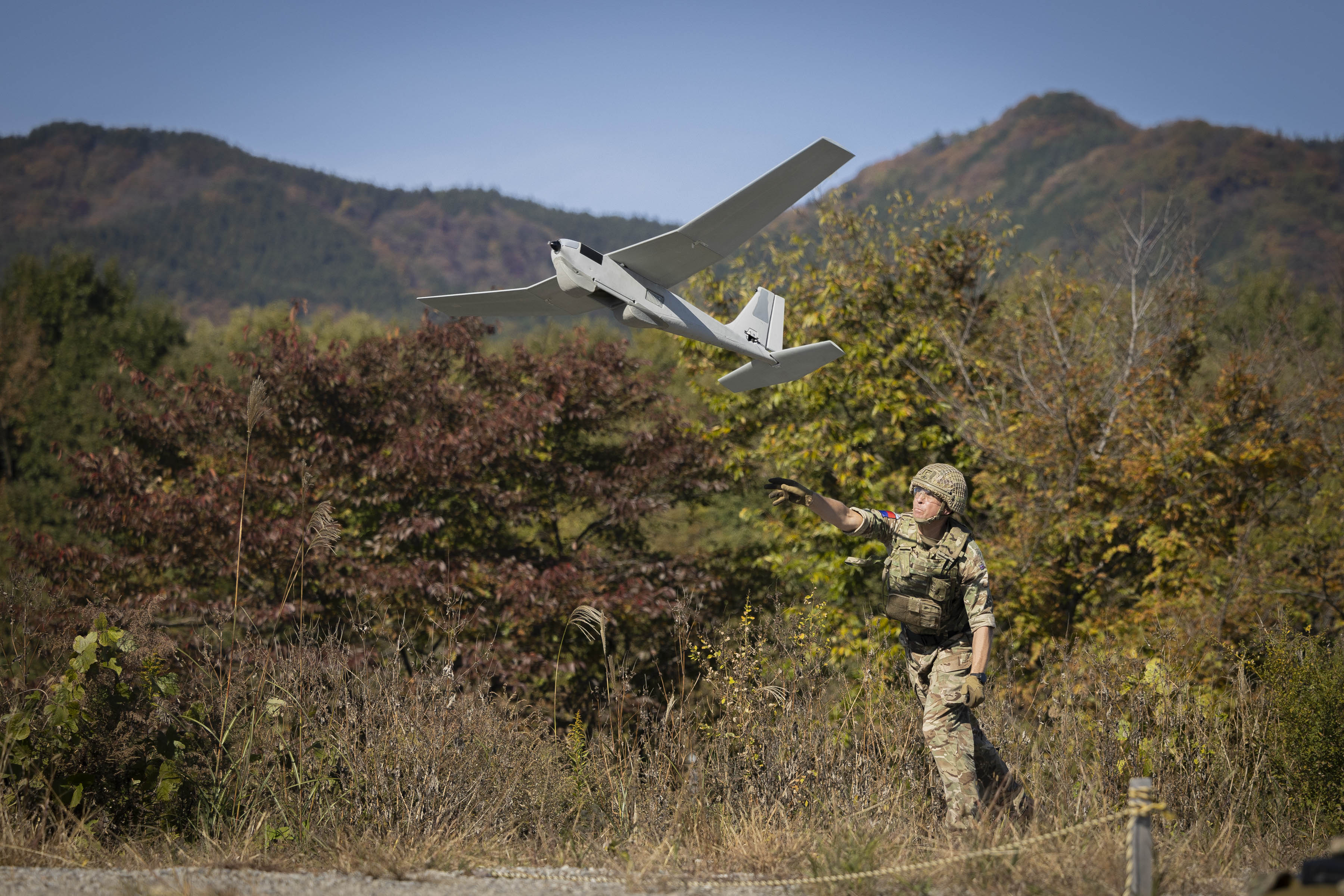
Above:
Drones directed mortar fire during live firing training.
Courtesy Briitsh Army
Exercise Vigilant Isles 23 (Ex VI23) was delivered by the Japanese 1st Airborne Brigade with British Army units from 1 Royal Gurkha Rifles (1RGR), 16 Air Assault Brigade and 3 SCOTS taking part.
The 16 Air Assault Brigade’s Intelligence, Surveillance, Target Acquisition and Reconnaissance (ISTAR) Group used the exercise to test and refine the capabilities of its Uncrewed Aircraft System (UAS) or drone.
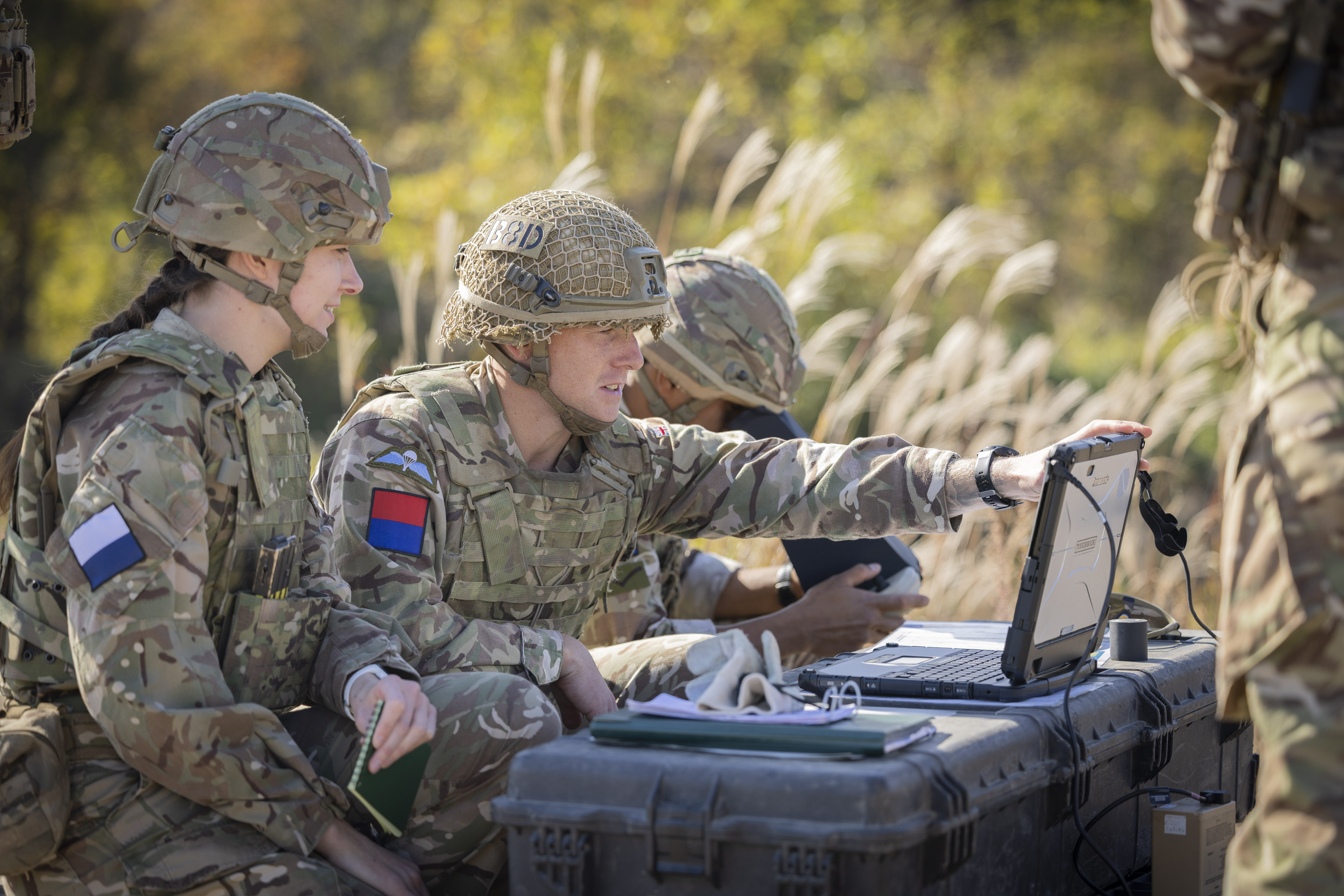
Under the umbrella of 16 Air Assault Brigade ISTAR, nine troops from 21 Air Assault Battery, 32 Regiment Royal Artillery launched a Puma UAS while working with a 1RGR mortar platoon (above).
The Puma (above) identified the mortars’ impact locations and sent corrections to enable accurate adjustments during the live firing tactical training phase of Ex VI23.
Sergeant Scott Jackson, 21 Air Assault Battery, said: “In this terrain we have provided normal camera footage as well as infra-red footage which means we have been able to fly during the day and night.
“There is software within the system that enables us to take a still of artillery rounds landing on the ground.
“We can then plot where a round has landed and where we are trying to hit, and the system will generate adjustments to ensure the accuracy of guns or mortars.”
WO2 James Easton, 21 Air Assault Battery, said: “The density altitude here has been a particular challenge for the Puma – it reduces the height we can fly at. The air’s less dense the higher you go and the hotter it gets.”
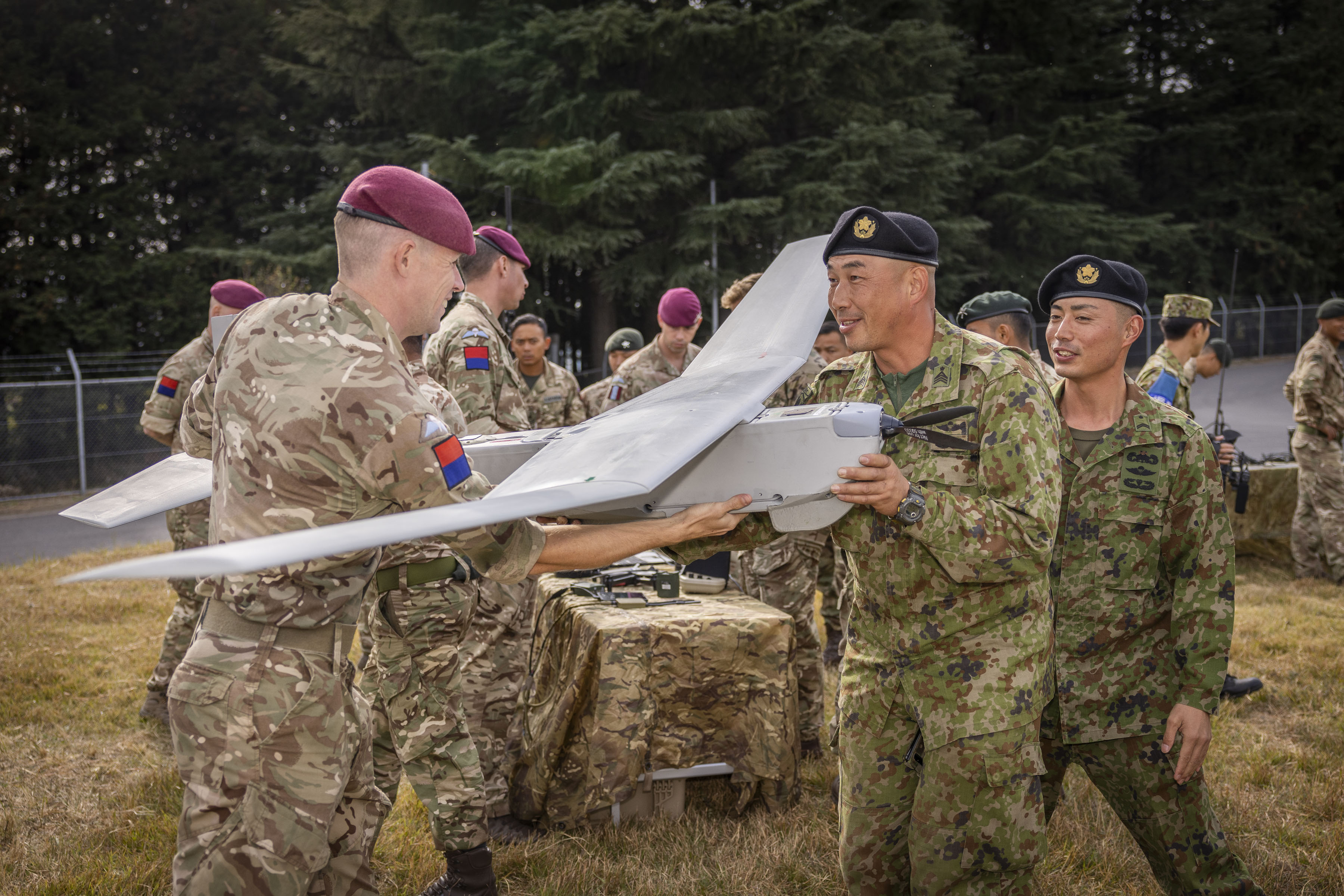
At the end of Ex VI23, Major Carl Schroeder, Officer Commanding, B Company, 1 Royal Gurkha Rifles, said: “The Japanese have been astonished by the Puma’s capability. We were able to fly it in all sorts of conditions, through the night and really take advantage of the thermal imaging to create a battle-winning advantage.
“The Japanese don’t have that capability and it was good that we were able to overcome all the hurdles to flying the drone and demonstrate it here.”
While Puma was being put through its paces, a Joint Terminal Attack Controller (JTAC), from 7 Para Royal Horse Artillery, directed close air support from F-2 fighter jets belonging to the Japanese Air Force.
JTACs operate from a forward position, working with RAF, Army and Navy air assets to coordinate ground and air attacks.
These highly skilled and specialised personnel make it as safe as possible for friendly forces on the ground and aircraft to attack the enemy, directing artillery and close air support.
Sergeant Chris Kearney-Williams, JTAC lead on Ex VI23, 7 Para Royal Horse Artillery, said: “I was in Misawa in the north of Japan conducting live ranges with aircraft alongside the Japanese. The Japanese seemed quite surprised at the capability JTACs have and our relatively low rank."
“The JTAC role involves being very self-reliant and requires a huge amount of flexibility in thinking. It’s like playing four-dimensional chess with battlespace management, making sure everyone is as safe as possible.”
The final unit that deployed to Japan as part of 16 Air Assault Brigade ISTAR was 226 Signal Squadron, 14 Signal Regiment, consisting of seven personnel.
Soldiers from this unit tapped into electronic warfare equipment to find Japanese patrols.
The 226 Signal Squadron personnel worked as part of a Light Electronic Warfare Team (LEWT), demonstrating their electronic warfare capabilities to the Japanese as well as the other British Army units.
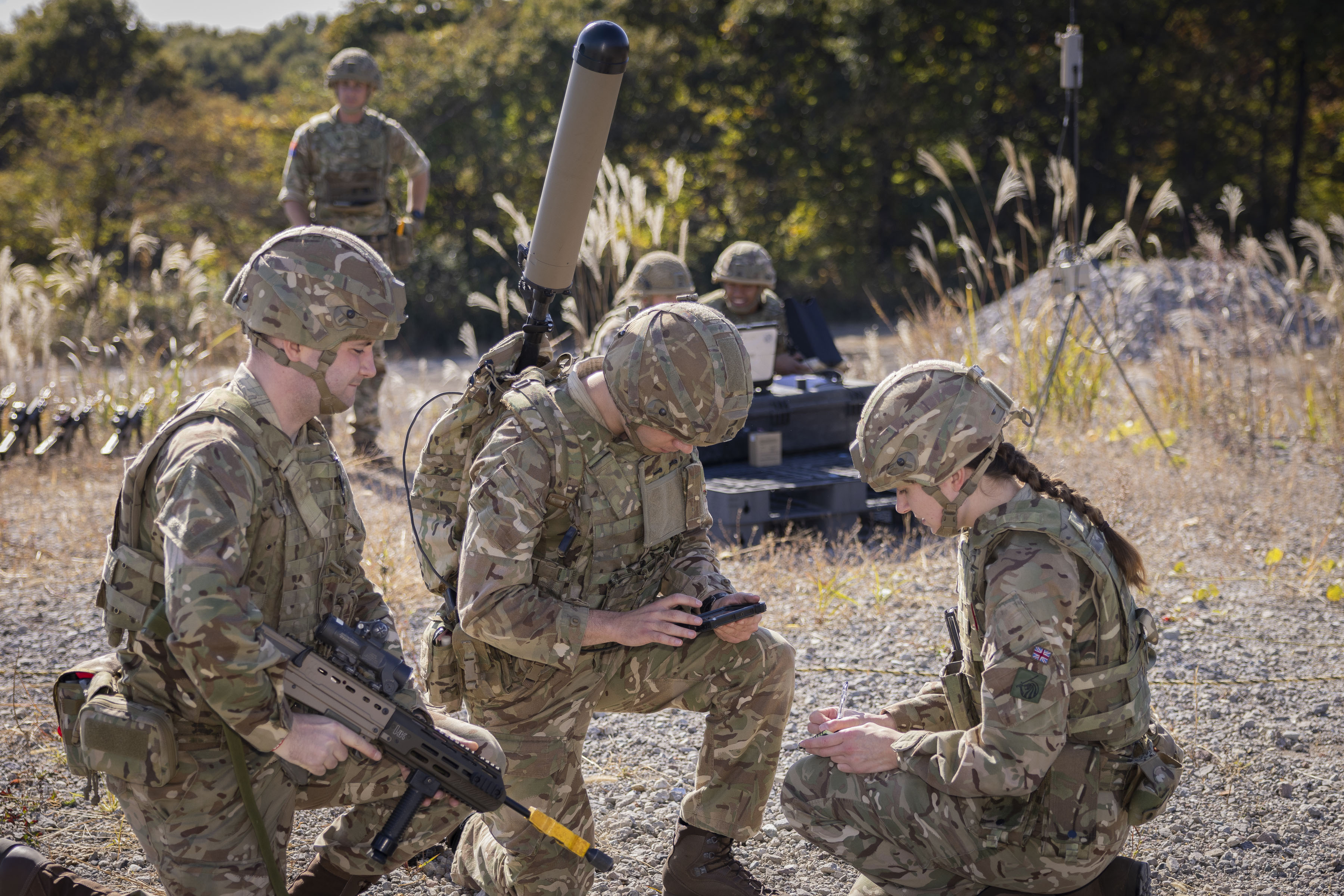
The electronic warfare specialists of 226 Signal Squadron used Sabertooth (above), a piece of equipment which can pinpoint enemy positions when transmitted over a radio frequency.
The enemy’s location was then passed to 21 Air Assault Battery, allowing it to fly the Puma drone to that location and stream a live feed to friendly forces on the ground.
Lieutenant William Kirk, 226 Signal Squadron, explained: “We will find a signal of interest, a frequency that we think the enemy could be using to transmit on, and we will then give a rough distance and direction to the drone to try and get a visual fix on what we think is the enemy.
“The electro magnetic spectrum has quite a broad range of frequencies to choose from."
“So it comes from a little bit of intelligence from understanding what the enemy use as their communications systems. That narrows the frequencies they could be using, then within that we search the spectrum to find the frequency they are using.”
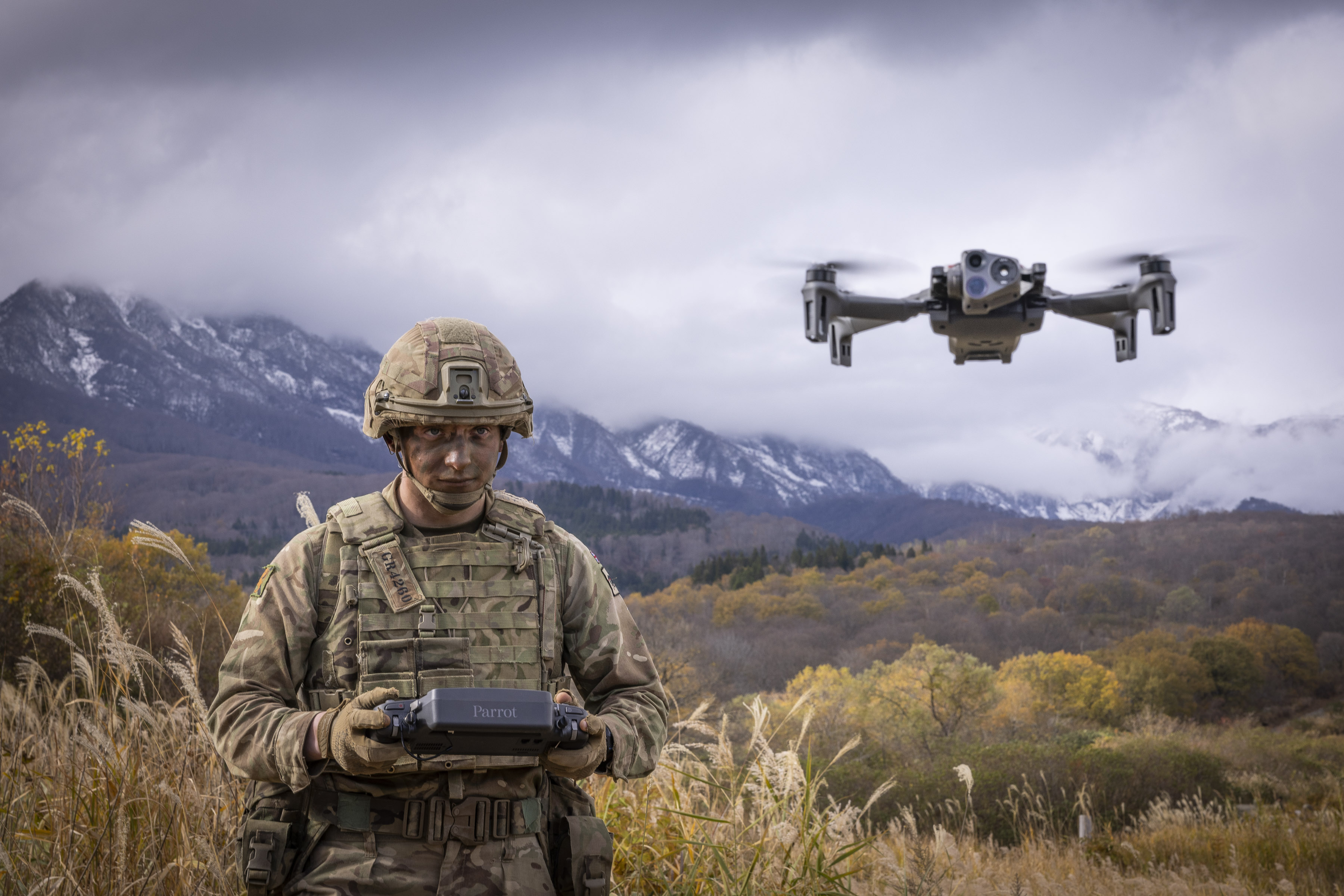
Puma was not the only British Army drone deployed in Japan. Troops from 3rd Battalion, Royal Regiment of Scotland, flew the Parrot Anafi drone (above) to identify targets during the live firing tactical training phase of Ex VI23.












